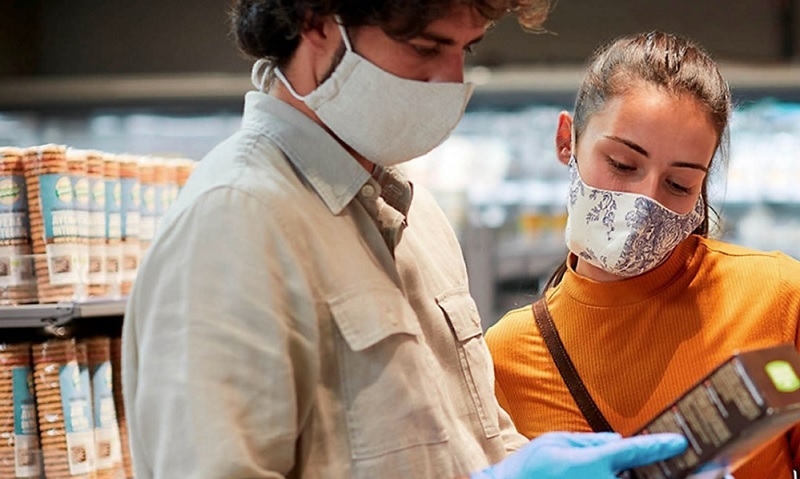Tetra Pak flags up consumer dilemma
 |
| Tetra Pak flags up consumer dilemma |
According to the latest research from Sweden-based packaging solutions provider Tetra Pak, the global food supply chain system is responsible for 26 per cent of global greenhouse gas emissions; a third of all food is lost or wasted somewhere in the supply chain; fossil fuel-based materials need to be phased out; and significant improvements are needed to the way packaging is dealt with after use.
As a move aimed at tackling the food packaging industry’s sustainability challenges, Tetra Pak has introduced a new collaborative innovation model with leading paperboard producers, in which the entire industry works in close collaboration. This brings together not only producers and suppliers, but also research institutions, universities, and startups in an attempt to find answers.
“It’s possible to make a completely sustainable package, but you have to make it safe,” said Laurence Mott, executive vice president for Development and Engineering at Tetra Pak. “If you can’t make it at scale, you can’t minimise food waste, and you can’t serve a growing global population. Bringing those three things together takes very strong collaboration.”
Mott also highlighted that the scale of global environmental challenges requires that actors within the value chain join forces to develop truly sustainable packaging solutions.
The Tetra Pak Index 2020 reveals the same fact. More than two-thirds (68 per cent) of consumers worldwide now believe that food safety is a major concern for society. Nevertheless, the report shows a dilemma consumers are increasingly facing when trying to balance between the environment and food safety.
According to the report, consumers’ greater interest in food safety and environmentally-sound solutions is reflected in their expectations of food and beverage companies. When asked what the top three issues companies should tackle now and in the future are, “improving food safety” was ranked highest (53 per cent of consumers agreed), closely followed by “using sustainable packaging” and “limiting food waste”.
While holding manufacturers responsible for food safety (at 55 per cent, way ahead of government), less than a quarter (23 per cent) trust in them as a provider of information on the subject. Interestingly, on-pack information rates significantly higher – rated fourth (at 42 per cent), ahead of family and friends – perhaps because it is associated with key information such as ingredients and expiry dates, which are widely relied on. This suggests that on-pack is a good medium for brands to get their transparency message across.
The expiry date is also considered a vital sign of food safety, with 67 per cent thinking that a product may be unsafe to consume once this date has passed. This has a big impact on food waste, signalling an opportunity for less confusing labelling and for brands to rise to the dual challenge of ensuring food safety while protecting the environment, via consumer education.
In addition, respondents are looking for transparency as reassurance, with 58 per cent saying they really care about how food and beverages are produced and want to know everything they can about the process. This suggests appetite for more information about production methods and especially provenance – one of the strongest drivers of consumer purchasing decisions.
The report also shows when asked what is key for them in packaging, consumers perceive the main purpose of packaging is ensuring food safety, even when compared with other factors that they rate highly – such as the sustainability-related ones. This suggests an appetite for innovative packaging solutions helping consumers to address the dilemma.
This appetite is backed up by consumer expectations about future packaging innovations. In this case, the number one choice was protecting food for longer to avoid waste and maintain nutritional value (70 per cent). Then it comes to sustainability-specific choices that they still rate very highly (at 61 per cent for no over-packaging and 59 per cent for recyclability).
Generally speaking, the changing interplay between food safety and the environment encompasses many areas, deeply influencing consumer expectations, and Tetra Pak is working with customers to realise the opportunities this new consumer mindset presents.
What the stars mean:
★ Poor ★ ★ Promising ★★★ Good ★★★★ Very good ★★★★★ Exceptional
Related Contents
Latest News
More News
- Heavy industries set for pilot greenhouse gas quotas (December 25, 2025 | 10:00)
- Swedfund invests in MSME growth and climate action in Vietnam (December 19, 2025 | 11:42)
- GreenYellow brings solar energy to light up remote schools in Tuyen Quang province (December 19, 2025 | 08:00)
- Charge+, Grab partner to develop EV charging network in Vietnam (December 18, 2025 | 17:11)
- Linking sci-tech and innovation to Vietnam’s net-zero future (December 18, 2025 | 14:31)
- Driving double-digit growth through green and circular transformation in Vietnam (December 17, 2025 | 09:00)
- Standard Chartered and ACCA deepen collaboration to develop Vietnam’s talent for a sustainable future (December 15, 2025 | 18:18)
- Schaeffler reports strong early output from Dong Nai solar project (December 12, 2025 | 15:16)
- Forestry conference highlights biodiversity and sustainability goals (December 09, 2025 | 13:35)
- Home Credit honoured among top 10 sustainable companies in trade and services (December 09, 2025 | 12:18)

 Tag:
Tag:





















 Mobile Version
Mobile Version